Cell Division Inhibitor Herbicides
Crop Insights written by Michael DeFelice, Ph.D.¹
Crop Insights written by Michael DeFelice, Ph.D.¹
There are several herbicide families classified as inhibitors of cell division in plants. The most widely known and used herbicides with this general mode-of-action are the ‘acid amide’ families of preemergence grass herbicides. The primary of mode of action of these herbicides is still largely unknown.
The Herbicide Resistance Action Committee and the Weed Science Society of America classify five herbicide families and a few unclassified herbicides in the ‘cell division inhibitors’ group. These families are the acetamides, the benzamides, the chloroacetamides, the oxyacetamides, the tetrazolinones and ‘others.’ This article will focus on the chloroacetamides and oxyacetamides, since these families contain the most widely used herbicides in this class for corn and soybean production.
The first herbicide in this general group was discovered in the 1940s with the introduction of diphenamid (Enide). In the 1970s and early 1980s alachlor, a chloroacetamide, was one of the most widely used herbicides in the world.
The amide herbicides are classified into three groups: 1) the soil-applied chloroacetamides and oxyacetamides (the focus of this article), 2) other soil-applied amides (diphenamid, napropamide and others), and 3) foliar applied amides (propanil). These herbicides have been labeled primarily for preemergence annual grass and nutsedge control with additional control of small-seeded broadleaf weeds. They are widely registered for many agronomic and horticultural crops.

Figure 1. Corn seedling not unfurling due to interference with cell division and enlargement (acid amide herbicide).
The primary mechanism of action of the acid amide herbicides is still unknown. However, they are known to inhibit several metabolic functions in plants including lipid biosynthesis (not ACCase) and the synthesis of proteins, gibberellins, anthocyanin and lignin. It may be that these herbicides are acting on several sites of action at the same time. The general mode of action is interference with cell division and cell enlargement.
The acid amide herbicides are absorbed by roots and shoots, and are then translocated throughout the plant, primarily in the xylem. Current research suggests the grasses absorb these herbicides through emerging shoots (coleoptiles) while broadleaf plants absorb them primarily through emerging roots. These herbicides do not inhibit seed germination, but rapid uptake by the emerging shoot and roots usually kills susceptible weeds before they emerge from the soil. Degradation in the plant is through conjugation with glutathione and/or glucose. The mechanism of selectivity in tolerant plants appears to be rapid detoxification by conjugation of the herbicide with glutathione.
There is a wide range of chemical behavior and properties among the herbicides in the five families of cell division inhibitors. This discussion will focus on the acid amide chloroacetamide and oxyacetamide family herbicides that are of primary interest for corn, soybean and grain sorghum production.
The acid amide herbicides are soil applied and must be moved down into the weed seed germination zone by tillage or ‘activation’ (leaching from rainfall or irrigation). The acid amide herbicides are adsorbed to soil clay and organic matter and tend to leach only one to two inches deep in the soil. Soil persistence of the acid amides is relatively short at one to three months, so these herbicides have short crop rotation restrictions. Degradation in the soil is primarily through microbial action. The rate of degradation is greater at higher soil moisture levels.
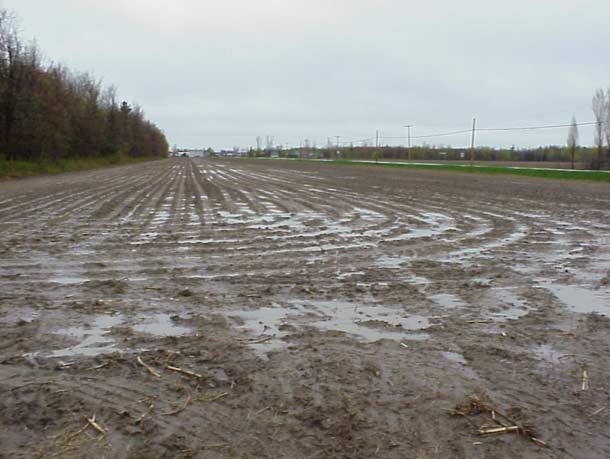
Figure 2. Corn leafing out underground from application of acid amide in cool, wet spring.
The acid amide herbicides have broad-spectrum grass activity. This has made it difficult to find herbicides in this group that have natural selectivity to monocot crops such as corn and grain sorghum. Herbicide ‘antidotes’ or ‘safeners’ have been discovered that provide additional tolerance to these herbicides on treated plants.
Several safeners have been registered for use on crops such as corn and grain sorghum. Grain sorghum can be protected from the herbicide by treating the seed with one of these safeners. The emerging roots and shoots adsorb the antidote before the herbicide can cause significant damage to the plant. Other acid amide herbicides contain the antidote mixed in the formulation itself such as Dual II (metolachlor plus antidote) and Harness/Surpass (acetochlor plus antidote). These antidotes have structures and activity very similar to the acid amide herbicides themselves. They provide a ‘safening’ effect by stimulating glutathione S-transferase metabolic activity in the crop, which causes more rapid conjugation with glutathione and detoxification of the herbicide.
The acid amide herbicides are primarily soil applied and have very little foliar activity. Typical symptoms of acid amide herbicides on emerging seedlings include inhibition of shoots resulting in plants that do not emerge from the soil. Grasses may leaf-out below the soil surface or fail to unfurl, causing a ‘buggy whip’ appearance. Broadleaves may have crinkled leaves and/or a shortened mid-vein which produces a ‘drawstring’ appearance on the leaf tip.
The degree of plant response will vary with application rate, stage of plant growth, plant species, plant (or crop) variety, and environmental conditions. Plant response tends to be more severe and common with cool, wet soils at the time of crop emergence.
Weed resistance to acid amide herbicides has been relatively uncommon despite their widespread use around the world. The first reported acid amide resistant weed was rigid ryegrass (Lolium rigidum) in Australia in 1982. There are currently seven weed species populations that have evolved resistance to acid amide herbicides reported from nine countries (Table 1). No resistant weeds had been reported in the corn and soybean production areas of the United States until 2016 when resistant populations of both waterhemp (Amaranthus tuberculatus) and Palmer amaranth (A. palmeri) were confirmed in Illinois and Arkansas, respectively.
Table 1. Weed species with populations resistant to cell division inhibitor herbicides (Heap, 2020).
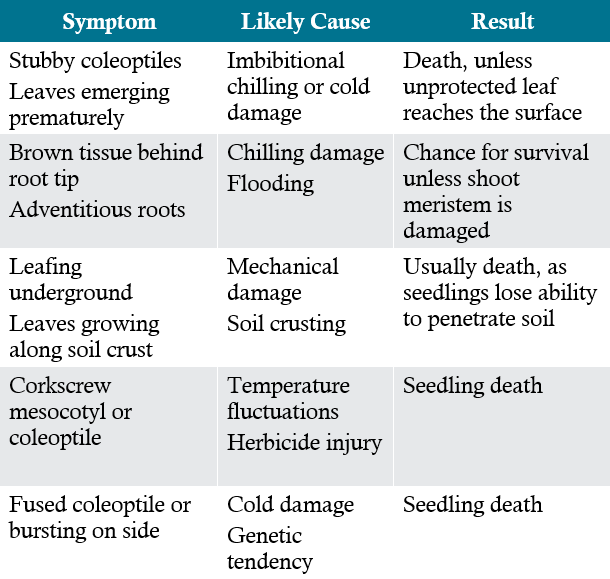
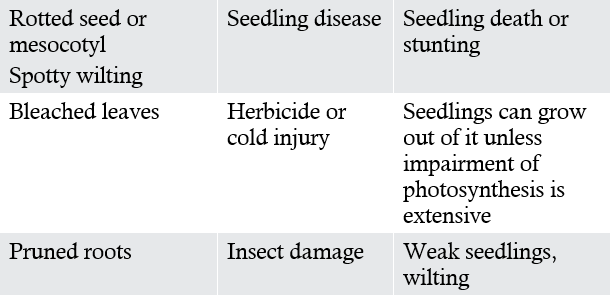
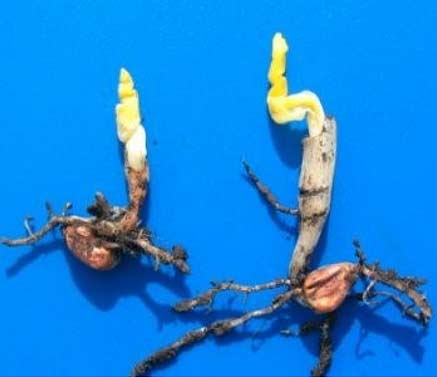
Figure 3. Classic "drawstring" appearance of soybean leaf from acid amide herbicide.
Several seed company and university research studies have shown that corn inbreds and hybrids have different levels of tolerance to the acid amide herbicides. These differences in tolerance to acid amide herbicides are most likely related to differential metabolism among the inbred and hybrid lines. The acid amide herbicides have been widely used in corn production for almost 50 years, so inbred selection in the presence of these herbicides in the field has probably eliminated most of the more susceptible lines.
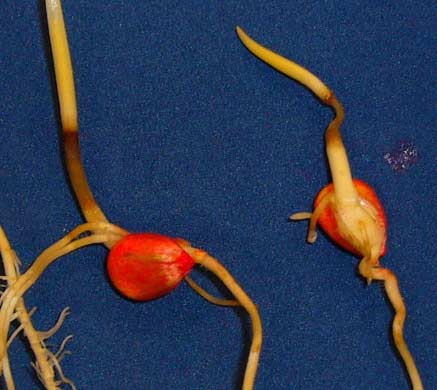
Figure 4. Corn not unfurling from acid amide application. Pioneer tests both inbreds and hybrids for plant response to acid amide herbicides.
The acid amide herbicides are widely used on corn, grain sorghum and soybeans, among other crops. They are popular and effective preemergence grass herbicides that are used on a large percentage of the world’s corn and grain sorghum crops. Their preemergence grass activity makes the acid amide herbicides the perfect companion to atrazine, which provides broadleaf weed control in corn and grain sorghum. The acid amide herbicides are also used for preemergence grass control in conservation and no-till soybeans because they do not require mechanical incorporation into the soil.
The level of crop tolerance to acid amides varies with the specific herbicide, crop genetics and addition of herbicide antidotes or safeners. Most crop responses to these herbicides occur during extended periods of cool temperatures and/or wet soils. Note that corn or sorghum leafing out below the soil surface can also be increased or caused by soil crusting. Rotary hoeing can sometimes alleviate this effect. Crop response from these herbicides can be minimized by planting crop seed at the proper depth below the treated soil, ensuring seed furrow closure, and by keeping soils well drained.
The foregoing is provided for informational use only. Please contact your Pioneer sales professional for information and suggestions specific to your operation. Product performance is variable and depends on many factors such as moisture and heat stress, soil type, management practices and environmental stress as well as disease and pest pressures. Individual results may vary.
June 2020